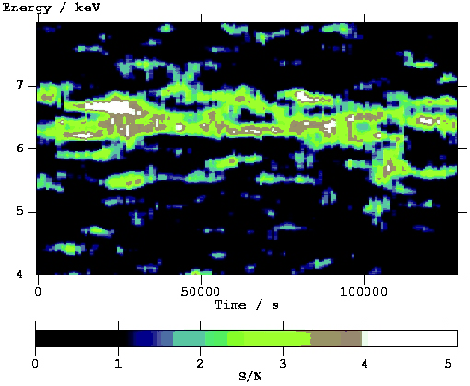 There are many unsolved problems that have arisen from the discovery of
active galaxies sixty years ago, and the extremely luminous class of
active galaxy known as quasars (or QSOs) a little over forty years ago:
There are many unsolved problems that have arisen from the discovery of
active galaxies sixty years ago, and the extremely luminous class of
active galaxy known as quasars (or QSOs) a little over forty years ago:
I primarily study luminous active galaxies and quasars, which we think are powered by matter falling into black holes which themselves live at the centres of some of the most massive galaxies that we can see. I am also interested in observing samples of quasars as a means of understanding cosmology.
 There are many unsolved problems that have arisen from the discovery of
active galaxies sixty years ago, and the extremely luminous class of
active galaxy known as quasars (or QSOs) a little over forty years ago:
There are many unsolved problems that have arisen from the discovery of
active galaxies sixty years ago, and the extremely luminous class of
active galaxy known as quasars (or QSOs) a little over forty years ago:
I also work on observational study of large-scale structure, both as measured by large redshift surveys of quasars (which can be seen over vast cosmological distances) and from measurements of weak gravitational lensing. Weak gravitational lensing is an effect in which the shapes of galaxies appear distorted as a result of light rays from them having been "bent" as they pass massive cosmic structures (galaxies and clusters of galaxies) on their way to us. The distortion effect is very small, and because we cannot know the intrinsic shape of any one galaxy we can only detect the effect statistically in measurements of large samples of galaxies. However, the method has the great advantage that it probes directly the distribution of all gravitating matter, not just the luminous matter we see, and hence over the past decade study of weak lensing has become a major focus for observational cosmology. I have been interested in the methods we use to make the measurements, and in particular have been applying Bayesian statistical methods to the problems of both measuring galaxy shapes and also estimating galaxy redshifts (a measure of their cosmological distance, crucial for interpreting the shape signal) when spectra are not available (the usual case in faint galaxy surveys).
X-ray observations of active galaxies
The cosmological evolution of quasars and active galaxies
The 2dF QSO Redshift Survey (2QZ)
Radio-loud and radio-quiet quasars